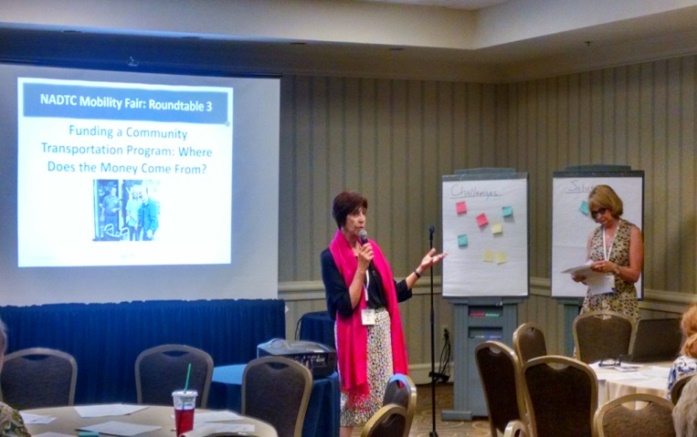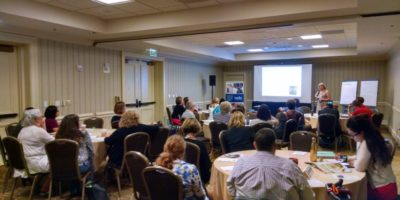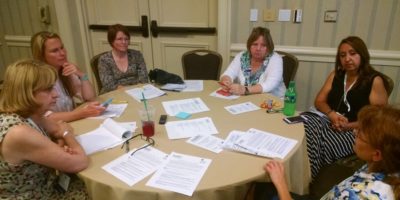NADTC Mobility Fair, July 27, 2016
Held at the National Association of Area Agencies on Aging Conference
San Diego, CA
Welcome back to the third and final part of our mini-blog series about the 2016 NADTC Mobility Fair.
The third Mobility Fair session we are summarizing is: Funding a Community Transportation Program: Where Does the Money Come From?
If you missed our first two posts on the NADTC Listening Session and Volunteer Transportation, click back to read here and here.
This mini-series reviews the discussions that took place during the Mobility Fair, but these are issues that many agencies and programs face. Your input and perspective is important and can help shed light on resources or ideas that are not highlighted here. We invite your reactions, thoughts, questions, and resources on any of the topics covered in these posts, so be sure to leave a comment below!
Communities across the country are facing decreased funding and a growing demand for diverse transportation services for older adults, people with disabilities, and caregivers. A major part of our discussion focused specifically on the Federal Transit Administration (FTA) Section 5310 funds (Enhanced Mobility of Seniors & Individuals with Disabilities).
- FTA’s Section 5310: It is essential to understand how your state manages the requirements, tasks, and deadlines of the Section 5310 application process (for more information on this topic, see “Section 5310 Funding: An Application Checklist” in the Resource section below). Every state is different in regards to the process and dates in place for distributing funds.
- Match requirements for Section 5310 vary by project. Capital projects (e.g., funds to purchase vehicles) require a 20 percent match, while projects to fund program operations require 50 percent match.
- Involvement in the coordinated public transit-human services transportation plan is the best way to find out what projects and ideas are being developed in your community and connect with recipients of Section 5310 funding and other funding sources (to find the agency responsible for the coordinated plan in your community, see “Section 5310 Funding: An Application Checklist” in the Resource section below).
- Diversify your funding and seek support through non-transportation avenues such as health (your community’s hospital may have a foundation interested in your project), community development block grants, veterans programs, and Older Americans Act. These additional funding sources can also be used as match for Section 5310 funds.
- Community-specific funding: San Diego County utilizes funding generated from a regional half-cent sales tax that has been set aside specifically to support a variety of transportation projects throughout the county. San Diego’s Senior Mini-Grants are derived from this tax revenue and are competitively awarded to agencies providing specialized transportation services for seniors age 60 and older in San Diego County.
- Rural and tribal areas face unique challenges because of the long distance, low-density trips that need to be provided. Federal Section 5311 (Formula Grants for Other than Urbanized Areas) provides funds specifically to rural areas, with populations of less than 50,000 and 5311(c) funds are specifically earmarked for tribal communities’ development of public transit.
- Other challenges rural areas face are a lack of drivers, difficulty filling seats on public transit and provision of trips multiple times per week to the same destination. For example, in some communities, trips to the grocery store are made once a week. Patrons only purchase what they can carry and without volunteer aids to assist the riders to carry packages, patrons are unable to purchase the amount of food or goods they may truly need. A transportation volunteer aid program can be supported with Section 5310 funds.
- Partnerships: It is beneficial to create partnerships between Aging and Transportation agencies, not just for funding purposes, but because everyday general communication and coordination are easier when there is an already established, positive relationship. Programs can also benefit by looking beyond boundaries (geographical, tribal, political, or providers) to develop partnerships that can create shared routes or group travel, reduce costs, and better serve consumers. This is essential when organizing trips for riders who may need to travel across multiple county boundaries. Partnerships should also be approached with creativity to allow programs to find other gap funding for projects that are in the pipeline.
Resources:
- Section 5310 (Enhanced Mobility of Seniors & Disabled Fact Sheet)
- Section 5311 (Formula Grants for Other than Urbanized Areas)
- Section 5310 Funding: An Application Checklist
- Navigating Funding Opportunities for Technology Planning and Deployment, An NADTC blog post by guest blogger Carol Schweiger.



Leave a Reply